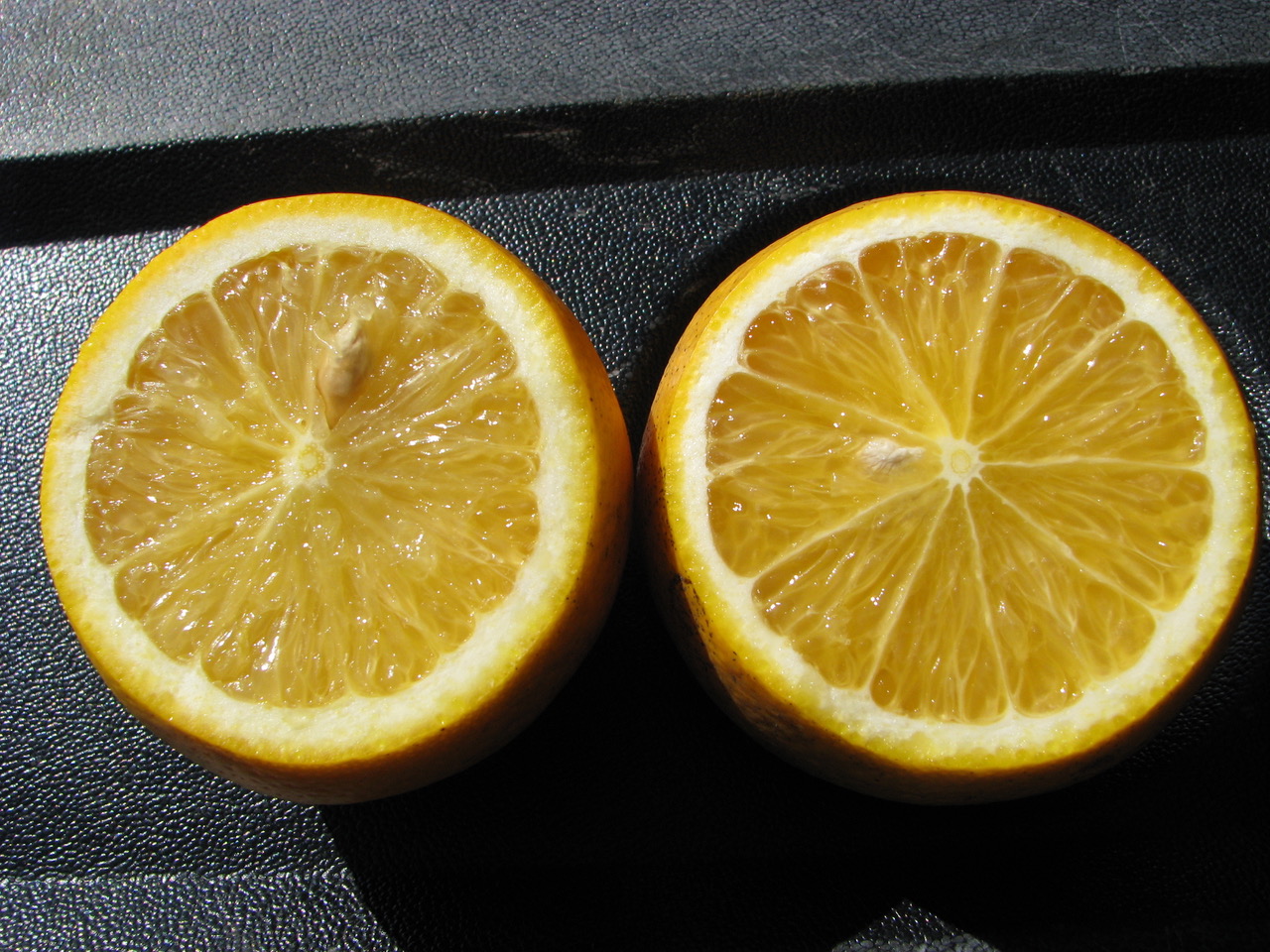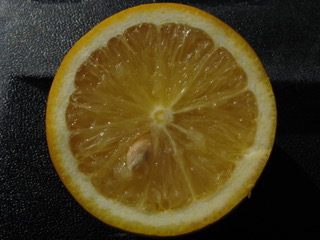More often than not, Central Florida will experience freezing temperatures. These temperatures can cause damage to citrus fruit in some areas almost every winter. Read on to learn how to detect freeze damage if this happens to you.
Using Temperature

The rule of thumb in determining if cold temperatures have caused citrus fruit damage is if the temperature drops to 28°F for longer than four hours for round oranges. If the temperature is lower than 28°F, the duration necessary to cause the same corresponding amount of damage will be less. So, it is not always as straightforward as one would like. Susceptibility to freeze damage is not only dependent on the minimum temperature, but also the duration of these subfreezing temperatures.
An example for round oranges would be that with a minimum temperature of 28°F for five hours, a 5% level in fruit damage would occur, while 2 hours at 26°F would result in a 10% level.
Susceptibility
There are also differences in the susceptibility of citrus fruit varieties to cold temperatures. In looking at the broad categories of citrus varieties grown in Central Florida, the following lists the susceptibility of citrus fruit to freeze damage from most susceptible to least:
- tangerines (most sensitive)
- tangelos
- oranges
- grapefruit (least sensitive)
This variation is due to the thickness of the peel and the size of the fruit. Larger fruit withstands colder temperatures longer than small fruit.
How Fruits Freeze
Potential fruit yield losses are more concerning as critical temperatures are forecast. Growers will begin to assess freeze damage the morning of a freeze by cutting fruit to determine if the juice vesicles have frozen. In calm freezes, the citrus fruit will begin to freeze from the stem end down to the blossom end. In windy freezes, the fruit will begin to freeze on the wind exposed side of the fruit. Freeze damage evaluations begin at the stem end of the fruit. Growers slice the fruit starting from the stem end and going down in 1⁄4” increments until they no longer observe freeze damage.
Freeze Damage
Citrus growers can experience two types of fruit loss due to a freeze. The first is a reduction in juice content from the damaged juice vesicles due to the evaporation of juice through the citrus peel. The second is the direct loss of fruit due to dropped fruit that will not be harvested and delivered to the processing plant or packinghouse.

We see freeze damage by observing the damaged juice vesicles in the individual fruit segments.These damaged juice vesicles leak juice into the surrounding fruit segments. After 4 to 5 weeks, the leaked juice is lost through the citrus peel and the fruit begins to dry out.
In mild freeze situations, the fruit loses some juice but otherwise remains on the tree until harvest. In some instances, with minimal damage, the undamaged segments will expand into and fill in the damaged areas over time. If the freeze is severe and the stem experiences freeze damage, fruit drop will occur.
More Information on Citrus
For more information on citrus, please visit the UF/IFAS Citrus Agents’ website.
For more information on weather and cold protection, please visit the UF/IFAS Florida Automated Weather Network (FAWN).
Sources:
- http://edis.ifas.ufl.edu/hs1275
- http://citrusagents.ifas.ufl.edu/newsletters/oswalt/November%202011.pdf
This blog post was written by Commercial Citrus Extension Agent, Mr. Chris Oswalt, and edited by Natural Resources Extension Program Intern, Ms. Paxton Evans
 0
0
